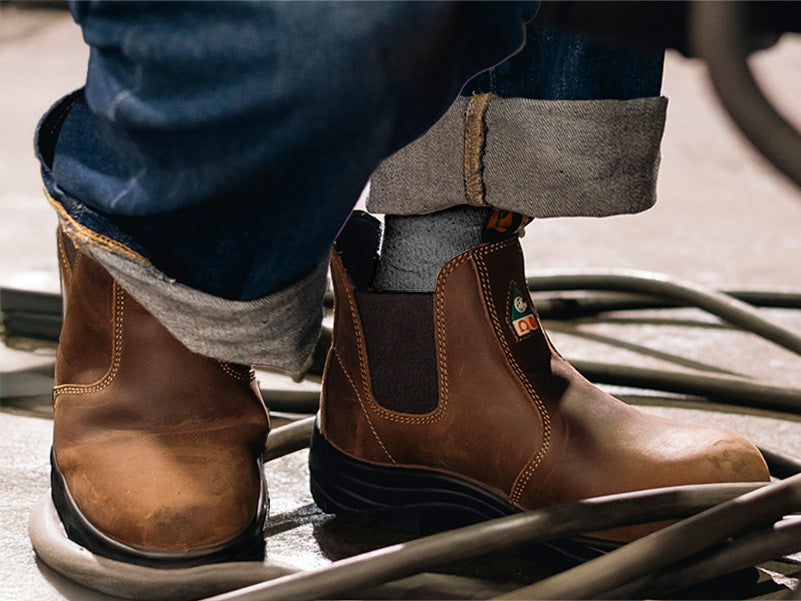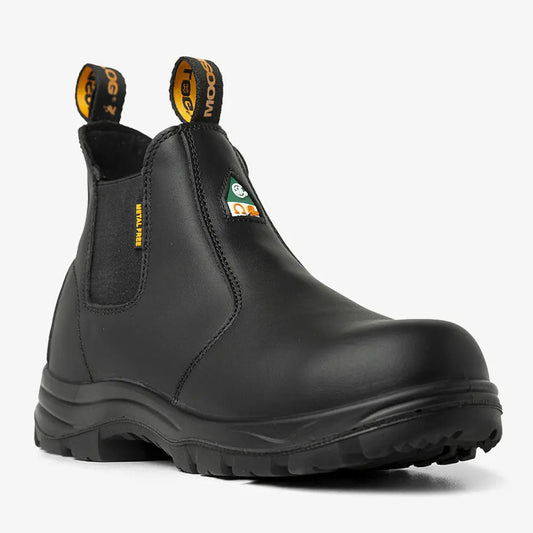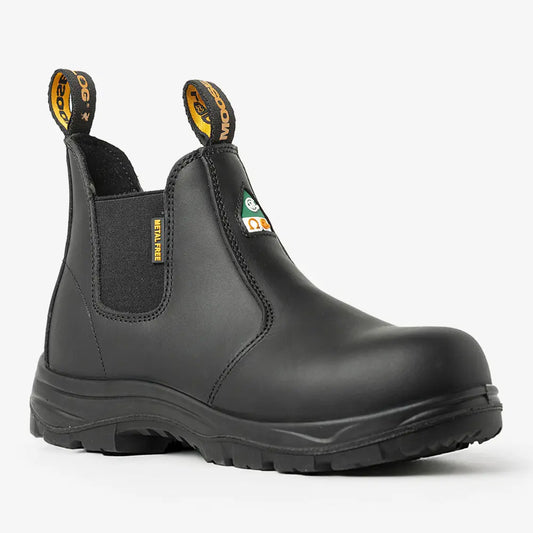
Maintaining Your EH Rated Work Boots: Best Practices for Longevity and Safety
EH rated work boots are a critical piece of personal protective equipment (PPE), especially for workers exposed to electrical hazards. But even the best safety boots will wear down over time—especially if they're not properly maintained. Dirt, moisture, and regular use can compromise the integrity of materials, reduce comfort, and most importantly, weaken protective properties.
In this guide, we’ll walk you through the best practices for maintaining EH rated, puncture-resistant work boots, so they last longer and keep you safer on the job.
Why Maintenance Matters for EH Rated Boots
Electrical Hazard (EH) rated boots are specifically designed to protect you from accidental contact with live electrical currents. They feature non-conductive outsoles, puncture-resistant midsoles, and materials that meet strict CSA and ASTM safety standards.
But here’s the catch: the effectiveness of these safety features depends on proper care. A damaged sole or cracked upper can compromise your boots' insulating properties, putting you at risk.
Poor maintenance can lead to:
- Reduced electrical insulation
- Water or chemical penetration
- Faster material breakdown
- Increased chance of foot injury from punctures or impact
1. Perform Regular Inspections
One of the easiest and most effective maintenance habits is a quick visual and physical inspection.
Check for:
- Worn outsoles: If the tread is thinning or smooth, your boots may no longer insulate effectively or provide proper traction.
- Cracks or cuts: Pay attention to any damage in the outsole, midsole, or upper that could compromise the electrical protection or puncture resistance.
- Separated soles: Detachment between sole and upper can break the non-conductive barrier.
- Loose stitching: Weak seams can let in debris or reduce structural support.
- Insole wear: Degraded insoles may not offer the same comfort or shock absorption.
Make it a habit to inspect your boots daily or weekly, depending on how demanding your work environment is.
2. Clean Them the Right Way
Keeping your boots clean isn't just about appearance—it's about preserving their safety features.
Cleaning Steps:
- Remove excess dirt with a soft brush or damp cloth after each use.
- Use mild soap and warm water to gently clean the uppers. Avoid harsh chemicals or solvents that could damage the protective layers.
- Rinse thoroughly and wipe dry with a towel.
- Air dry at room temperature—never use direct heat like a heater or hair dryer, which can cause materials to warp or crack.
Cleaning the boots regularly helps maintain the non-conductive properties of the outsole and prevents buildup that could reduce breathability or flexibility.
3. Condition the Leather (if applicable)
If your EH rated boots are made from full-grain leather, conditioning them will keep the leather supple and crack-resistant. Cracked leather can expose internal layers and compromise both insulation and structure.
Use a non-silicone leather conditioner specifically designed for safety footwear, and apply it every few weeks or after heavy use. Avoid oil-based products that could damage the materials or increase conductivity.
4. Store Boots Properly
When you're not on the job, the way you store your boots matters.
Best practices for storage:
- Store them in a cool, dry area away from direct sunlight
- Keep them upright to maintain shape and support
- Avoid damp or humid environments, which can lead to mold or mildew
- Don’t toss them in a tight box or bag—give them room to breathe
Proper storage helps maintain the boot’s structure, especially the insulating properties of EH-rated soles and puncture-resistant midsoles.
5. Replace Worn Out Boots
Even with the best maintenance, EH rated boots won’t last forever. Safety experts recommend replacing your boots when you notice:
- Outsoles are significantly worn down
- Puncture-resistant plates are compromised or no longer firm
- Insulating materials feel brittle or cracked
- Boots no longer fit properly due to stretching or damage
A good rule of thumb? If the boots no longer meet CSA or ASTM safety standards, or fail a visual inspection, it’s time to replace them.
6. Follow Manufacturer Guidelines
Every boot brand has its own construction methods and material combinations. Always read and follow the care instructions provided by the manufacturer. These guidelines are designed to preserve both comfort and safety features.
MooseLog, for example, offers EH rated, puncture-resistant boots built for long-term use and provides specific maintenance tips to help customers get the most from their footwear. Learn more at MooseLog.com.
7. Rotate Your Work Boots
If you work daily in harsh environments, consider rotating between two pairs of EH rated boots. This allows each pair to dry and recover between uses, reducing wear and increasing longevity.
Rotating your boots can also:
- Reduce odor buildup
- Extend insole life
- Prevent premature breakdown of non-conductive outsoles
Final Thoughts
Your EH rated work boots are your first line of defense in environments where electrical hazards are a constant threat. But without proper care, even the best boots can fail.
By cleaning them regularly, checking for wear, conditioning materials, and following manufacturer recommendations, you’re not only protecting your investment—you’re protecting yourself.
At MooseLog, we believe that safety starts with quality gear—and quality gear starts with proper maintenance. Explore our selection of lightweight, CSA and ASTM certified, puncture-resistant EH rated work boots at MooseLog.com, and make safety a daily habit.






